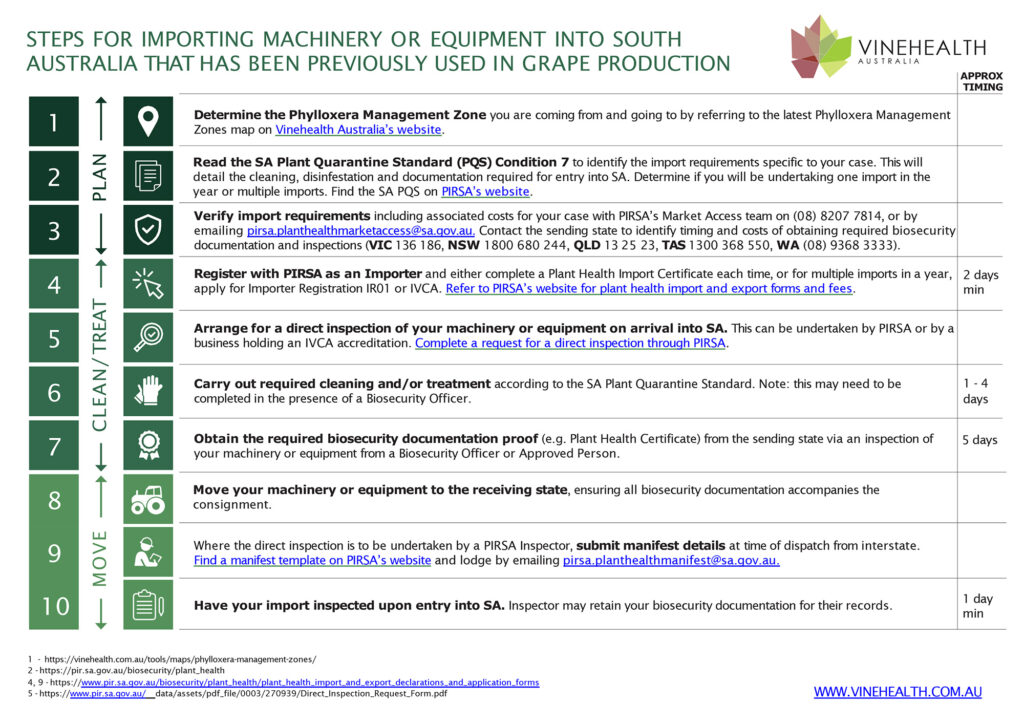Vinehealth fields calls every year from vineyard owners who are considering purchasing machinery from interstate and want to ensure they follow the importation rules. If you have your eye on a piece of machinery, there are some biosecurity considerations you need to be aware of.
Most secondhand machinery can be imported into SA, but the import requirements and documentation that you will need to obtain as part of your import will vary depending on the history of the machine – where it has previously been used, in what capacity and where it is currently located. All machinery must be clean of soil and plant material upon entry into SA.
Once your machine arrives in SA, Vinehealth recommends you quarantine it away from vines for a month, prior to thoroughly cleaning it before use. This is because phylloxera can live for 29 days on machinery without a food source.
The quickest way for you to understand and confirm your obligations around importing a secondhand machine from interstate into SA is to call the PIRSA-Biosecurity SA Market Access team on 8207 7814.
Getting the right documentation can take time and involves several steps. This needs to be factored into your timeline. However, complying with import requirements ensures that you are not inadvertently bringing in a pest, disease or weed to SA that could impact your vineyard, your neighbour’s vineyard, or other growers in your region.
From a risk perspective, Vinehealth Australia highly discourages vineyard owners from purchasing secondhand machinery that has been used in vineyards in a Phylloxera Infested Zone or Phylloxera Risk Zone for import into South Australia.
Your entry requirements may be as simple as completing a Biosecurity Declaration that states the machine has not been used in a high risk area, followed by an inspection when the machine reaches the SA border. However, if your machine has previously been used in vineyards, there are four key steps you are likely going to need to follow to import your secondhand machine into SA:
- Registering as an importer with PIRSA
- Undertaking the correct cleaning and/or disinfestation on the machine before it enters SA
- Obtaining the correct biosecurity documentation from the interstate biosecurity department and sometimes PIRSA
- Undertaking Direct Inspection of the consignment at the SA border
For detailed information on how to import machinery and equipment into South Australia, that has previously been used in grape production, click here. For Vinehealth’s fact sheet on Buying Used Machinery click here.
